|
 |
|

|
|
 |
|

|
|
 |
|

|
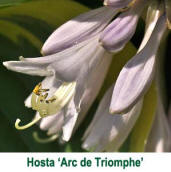 The number
of new and different hostas has exploded
over recent decades.
One of the early hosta pioneers,
Paul Aden author of
The
Hosta Book, stated that in 1988, "...at least 600 hosta cultivars have been formally
registered." The number
of new and different hostas has exploded
over recent decades.
One of the early hosta pioneers,
Paul Aden author of
The
Hosta Book, stated that in 1988, "...at least 600 hosta cultivars have been formally
registered."
In a 2010 presentation,
Mark Zilis,
hybridizer, author of
three books
on hostas and former owner of Q&Z Nursery commented
that "...there
are now over 8,000 identified types of hostas and around
5,000 hosta cultivars registered
with The American Hosta Society."
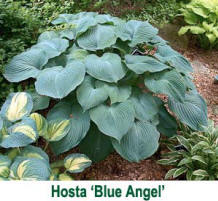 Through
2018, the
Hosta Registrar reports that 7,038 cultivars have been
registered with
The
American Hosta Society. That is an increase of
over 10
fold in the number of registered hostas in the past three decades.
The total of all named hostas is probably over
11,000. We have over 13,300 hosta names in our
database but this includes duplicates, out-dated and
incorrect names found in the world of hostas. Through
2018, the
Hosta Registrar reports that 7,038 cultivars have been
registered with
The
American Hosta Society. That is an increase of
over 10
fold in the number of registered hostas in the past three decades.
The total of all named hostas is probably over
11,000. We have over 13,300 hosta names in our
database but this includes duplicates, out-dated and
incorrect names found in the world of hostas.
Of this abundance of
cultivars, many, many differ from others in only one
minor trait making it difficult (and in some cases
impossible) to
differentiate between certain sets of cultivars. In fact, unless you are willing to make
a lifetime study of hostas like
Mark Zilis, most of
us will be unable to tell hundreds (perhaps
thousands) of hosta varieties
apart. So, how do we approach this jumble?

Sounds like a huge number of
hostas, but
remember that there are reportedly over 70,000 named
daylilies!
|
|
 |
People who grow hostas seem to
fall into one of four categories:
1) Backyard
Gardeners who use them as part of an overall
landscape plan. They need a hosta of a certain size,
color or form for a specific spot in their
beds or borders.
2) Collectors who grow almost
exclusively hostas and are constantly looking for
the new and exciting introductions. They may have
hundreds or even thousands of cultivars in their
gardens.
3) Hybridizers who search for
plants to use in their breeding programs. They
want to know the traits and lineage of hosta
cultivars.
4) Combination of the
other three categories.
We hope that Hosta Helper
can be of assistance to all four types.
|
|
 |
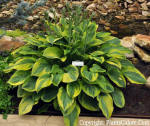 Hostas are the number one selling
species of herbaceous perennials. So, there is no
question of their popularity in the home landscape
where they are used for the beautiful foliage. The
key traits under consideration for using hostas in
the landscape are mature size and leaf color
(including variegation). Beautiful arrangements of
hostas and other plants or just hostas alone can be
made following basic design criteria for these two
traits. For those who want to go the next step,
factors such as flower types, leaf texture,
corrugation, petiole colors and mound shape can also
be included in the decision process. Hostas are the number one selling
species of herbaceous perennials. So, there is no
question of their popularity in the home landscape
where they are used for the beautiful foliage. The
key traits under consideration for using hostas in
the landscape are mature size and leaf color
(including variegation). Beautiful arrangements of
hostas and other plants or just hostas alone can be
made following basic design criteria for these two
traits. For those who want to go the next step,
factors such as flower types, leaf texture,
corrugation, petiole colors and mound shape can also
be included in the decision process.
To help you
select hostas for the home landscape, we have
included sort pages based on size, basic leaf color
and type of variegation for a large number of hostas.
|
|
 |
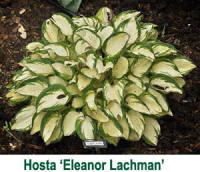 Many of the people who like to
collect hostas are interested in what is available
out there in the world which might add to their
collection. We have included background information
such as the originator, historical information and
plants that belong to various named series of hostas.
For the fun of it, we also include groupings of
hostas based on words included in their name or by
categories such as geographical, animal, religion,
movies, TV, music and many others. Many of the people who like to
collect hostas are interested in what is available
out there in the world which might add to their
collection. We have included background information
such as the originator, historical information and
plants that belong to various named series of hostas.
For the fun of it, we also include groupings of
hostas based on words included in their name or by
categories such as geographical, animal, religion,
movies, TV, music and many others.
|
|
 |
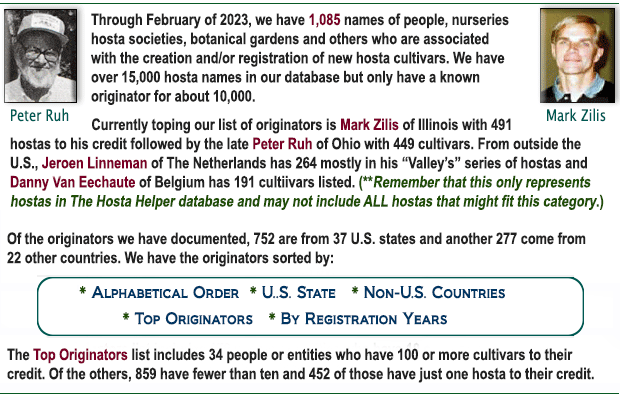
|
|
 |
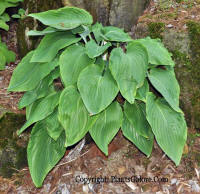
As we have filtered through
tons and tons of information about hosta cultivars,
it has become apparent that some of the numbers
thrown around are a bit deceptive. For instance,
Mark Zilis in his wonderful publication
The Hostapedia (2009)
discusses around 7,000 named hostas that he has personally observed
over 30 years or more. However, this does not mean
that you can go to a nursery or online shop and buy
that many different hostas.
In reality, many, many of the named plants
exist only in the garden of the originator or a few
collectors and will never be introduced into the
marketplace. Others are under long term evaluation
and some of those will end up in the compost bin.
Some named cultivars have fallen out of favor and are noted as "not existing" anymore.
|
|
 |
|
Hosta
Helper Collection - So far, we have included information
on over 15,000 cultivar and species
names in our database. This includes both registered and
non-registered plants along with duplicate, incorrect or out-dated
names. We also display 9,200 pictures of 4,232 different
hostas
that we have taken in public and private
gardens, nurseries and at 17
National
Conventions of
The American
Hosta Society.
Over 3,000 of the pictures have been donated for
display by 33 generous hostaphiles. You can find our complete listing of pictured and
non-pictured hostas in alphabetical order in our
Hosta Cultivar Section. |
|
|



